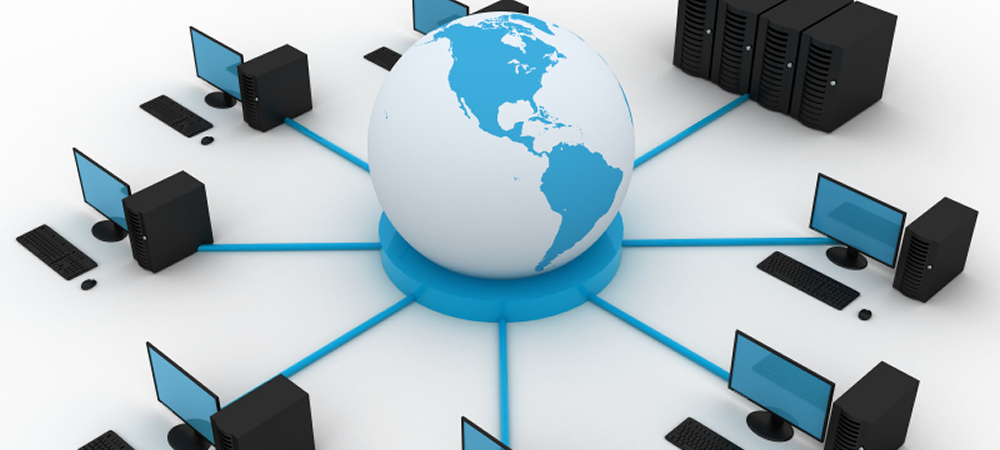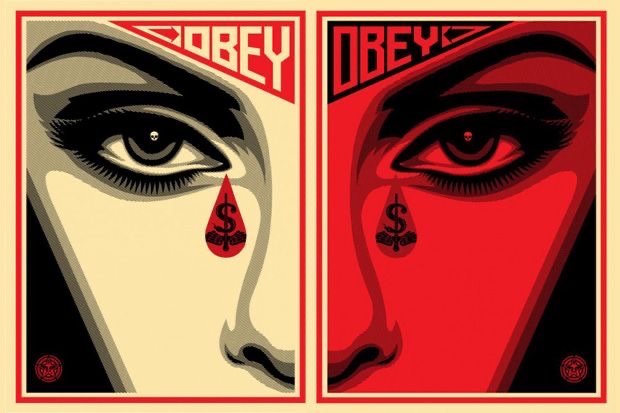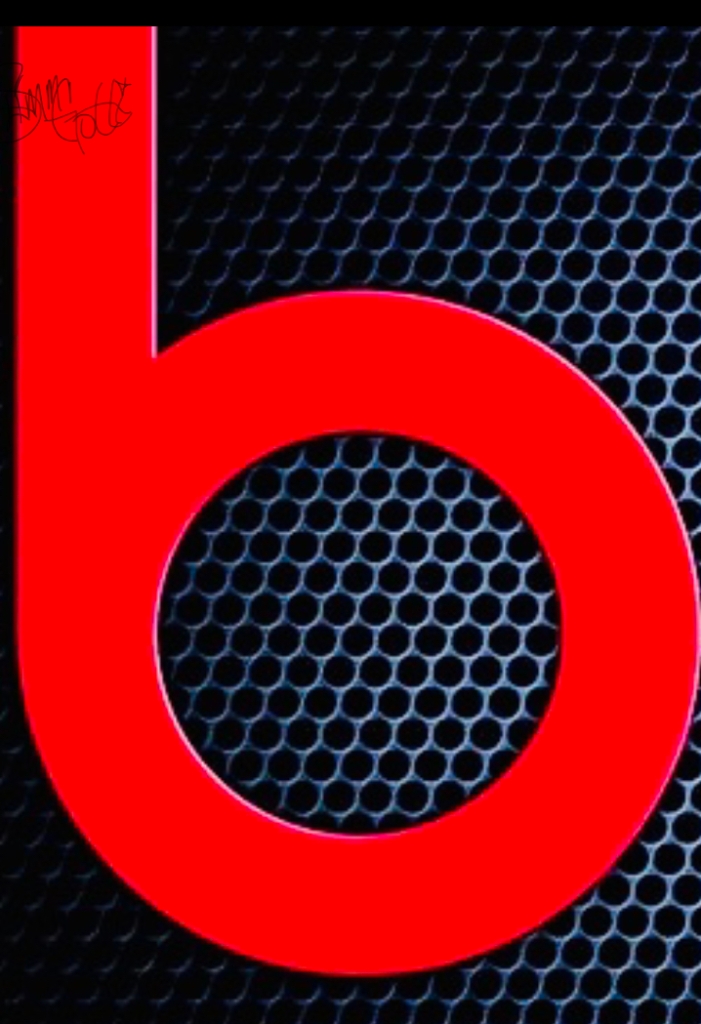














data:image/gif;base64,R0lGODlhAQABAIAAAAAAAP///yH5BAEAAAAALAAAAAABAAEAAAIBRAA7










Jon Rahm’s Wild Day Ends With Memorial Win and No. 1 Ranking
DUBLIN, Ohio — Jon Rahm won the Memorial to join Seve Ballesteros as the only Spaniards to reach No. 1 in the world, a victory he finally wrapped up with a magical shot that would have made his idol proud.
Rahm built an eight-shot lead at the turn, only to see it reduced to three shots with three holes to play Sunday on a Muirfield Village course playing its toughest in 42 years.
In trouble behind the green on the par-3 16th, with Ryan Palmer facing a 12-foot birdie putt from the fringe, Rahm hit a flop shot from deep grass that came out perfectly. It landed on the fringe, ran toward the hole and dropped for birdie as the fiery Spaniard let out a ferocious fist pump.
Palmer took bogey on the 17th, and the coronation was on.
The only issue was the score. Replay of Rahm’s chip appeared to show the ball moved ever so slightly when he placed his lob wedge behind it. PGA Tour officials reviewed it and gave him a two-shot penalty. It didn’t affect the outcome.
Rahm was surprised when it was mentioned to him after he finished and said he didn’t realize anything was wrong.
“It doesn’t take anything from the shot,” he said. “It’s not going to take anything away from today.”
Rahm closed with a 3-over 75 for a three-shot victory over Palmer, the highest final round by a Memorial winner since Roger Maltbie shot 76 in the inaugural year in 1976.
The victory was the 10th of Rahm’s career — fourth on the PGA Tour — and moves him past Rory McIlroy in the world ranking by winning against the strongest field of the year. He is the 24th player to be No. 1. Ballesteros spent a total of 61 weeks at the top from 1986 to 1989.
It was the strongest test, too, with the rough not being cut and the greens allowed to bake out because they are being replaced. The fifth green already was stripped as the leaders were on the back nine.
Only five players broke par, the fewest for a final round since the Memorial began in 1976. The average score of 75.932 was the highest for the final round since it was 75.972 in 1978.
Rahm looked to be playing a different course. He played bogey-free on the front nine with birdies on the two par 5s. That put him eight shots clear on his way to No. 1.
And then he made bogey on the 10th. Not a problem.
He yanked his tee shot into a creek on the par-5 11th, and that was a bigger problem based on how hard he slammed the club into the ground in a pique of anger. He made double bogey. Palmer made birdie on the 12th, and then Rahm made another bogey from the bunker on the 14th.
Just like that, the lead was three shots.
Only a week ago at Muirfield Village for the Workday Charity Open, Justin Thomas had a three-shot lead with three holes to play and wound up losing in a playoff to Collin Morikawa.
Rahm only wanted his tee shot on the 16th to stay dry, though the rough was not a great option with how fast the greens were running. The chip was similar — but from a different angle — to Tiger Woods chipping in from behind the 16th green when he won the Memorial for the fifth time in 2012.
Woods, in his first competition since Feb. 16 because of the COVID-19 pandemic, shot 76 and tied for 40th.
“Tough, tough conditions to start out my first week back, Thursday and Sunday,” Woods said. “But it was good to get the feel and the flow of competing again.”
Matthew Fitzpatrick had a 68 for the low score of the final day to finish third.
The consolation prize went to Palmer (74) and Mackenzie Hughes (72), who earned spots in the U.S. Open at Winged Foot in September as the leading two players from the top 10 who were not already eligible.
Henrik Norlander could have taken the final spot with a par on the 18th, but he missed the fairway well to the right, couldn’t reach the green and made bogey. Norlander and Hughes tied at 3-under 285, but the spot went to Hughes because he had the better world ranking.
That ranking now starts with Rahm, who only five years ago was at the Memorial to receive the Jack Nicklaus Award as the nation’s best college player.
On Sunday, Nicklaus was there to greet him — with a fist-bump — behind the 18th green.
Nicklaus revealed earlier Sunday he and wife Barbara tested positive for the coronavirus in March, and they have since tested positive for the antibodies. Nicklaus favors a handshake, though he said he would leave that up to the winner.
As for the shot behind the 16th? Nicklaus was impressed. So was Rahm to see it cut down to three shots with three holes to play.
“I still can’t believe it, I’m not going to lie,” Rahm said.
Pirates Top Prospect Ke’Bryan Hayes Out Indefinitely With Coronavirus
Pittsburgh Pirates third base prospect Ke’Bryan Hayes is out indefinitely while dealing with the novel coronavirus.
Manager Derek Shelton announced Hayes’ illness on Sunday after the 23-year-old Hayes — the son of former longtime MLB third baseman Charlie Hayes — gave the team clearance to do so.
The diagnosis blunts the momentum that Hayes, considered the top infield prospect within the organization, built during spring training.
The Pirates expected Hayes, a three-time Gold Glove winner while in the minors, to make his MLB debut this season while splitting time with Colin Moran. But now he must wait in isolation for his clearance to return to the team.
“Any time we lose development time, it’s challenging for us,” Shelton said. “As we’ve talked about numerous times, not just for (Hayes) but for all of our prospects, this is a big year for us. We have to be very thoughtful of how much work we get them and try to get them as much work as possible. Any time we lose prospect time, it’s challenging.”

I was talking to a neighbor a few weeks ago while having a few cold ones. Together we came up with the name and concept, which is very good, but my only hold up was not starting immediately!

The failed dream of the American small business
Independent businesses were once pillars of communities, but economic and systemic forces had left many fighting for survival. Then came the pandemic.
Located in the middle of the New Mexico desert, Pie Town is as much a nostalgic idea as an actual place. Founded in the 1920s and named after a bakery that sold dried-apple pies, most maps no longer list it. In the last census, its population numbered 186.

 Informatics
InformaticsWhen Kathy Knapp and her family visited in 1995, there wasn’t even any pie, just a mournful sign on a boarded-up bakery: “Used to be pie, ain’t no more. 4 sale.” A baker, Knapp’s mother took it the hardest. “She said, ‘It’s wrong. It’s so un-American,’ Knapp recalls. They left, but neither could get the spot, or Pie Town, out of their minds. A few months later Knapp bought the property for $110,000; her mom moved in, named the place Pie-o-neer, and started selling pies.




Knapp took over the shop in 1997. “I think everyone has a romantic notion they can move to the middle of nowhere and live happily ever after,” she says. A hundred miles southwest of Albuquerque and 235 miles east of Phoenix, surrounded by nothing but the blue sky and the red expanse of the desert, Pie Town, she says, “was the closest I was going to get to that.” She’s been serving pies — from classics like cherry, apple, and coconut cream to experimental flavors like pear-ginger and apple-green chile-pine nut — ever since.
Until Covid-19, that is. In March, following public health state orders, Knapp closed the shop, a move she, like many American small-business owners, believed was temporary. But as the months wore on, utilities, overhead, and insurance piled up. When, in June, the governor of New Mexico green-lighted the reopening of restaurants only at a limited capacity, Knapp and her partner understood the necessity from a public health perspective. But “we looked at each other and said, ‘How are we going to do that?’” she says.




Annual festivals, including Pi Day on March 14, drew thousands of people and drove a significant percentage of annual revenue. As did tourists, who turned Pie Town into a popular road-trip destination. After a 6-hour drive, “I can’t tell them, ‘Stay in your car until I tell you you can come in!’” Knapp says. “The writing was on the wall.”
Last month, she closed Pie-o-neer for good.
Covid-19 has shined a spotlight on the economic importance of small businesses and their physical impact on communities across the country, from large cities to remote destinations like Pie Town. It has also highlighted their precariousness.
Across the nation, restaurants, startups, retail stores, art studios, and other storefronts are facing a fate not unlike Pie-o-Neer’s. Defined by the Small Business Administration as companies with fewer than 250 to 1,500 employees, depending on the industry, there are about 31 million small businesses in the US. Last year, they employed nearly half of the private workforce and created 1.6 million jobs.
But heading into the pandemic, nearly half of small businesses had two weeks or less of cash liquidity on hand, according to a report from JPMorgan Chase, turning forced shutdowns and lost revenues into an immediate fight for survival.
The government scrambled to provide relief, funneling $670 billion into loans for small businesses through the Small Business Administration’s (now exhausted) Economic Injury Disaster Loan, designed to help businesses cover operating expenses such as rent and health care benefits; and the Paycheck Protection Program, which incentivized businesses to keep employees on staff by turning loans into grants if most of the money went to payroll.
This article is the first in an ongoing series about remaking the American economy, made possible by a grant from Omidyar Network.
There were flaws from the start. The first round of loan money quickly ran out; Ostensibly earmarked for small businesses, much of it nonetheless went to large restaurant chains like Shake Shack and Ruth’s Chris Steak House due to a provision in the program that based eligibility on employees per location. (Some companies, including Shake Shack, returned the money; others did not.) Recently released data shows that PPP loan recipients included private equity firms, lobbyists, major law firms, and businesses with financial ties to President Trump’s family and associates.
And because loans had to be accessed through financial institutions, companies that had preexisting relationships with a bank were moved to the front of the line — even though, in many cases, these were the businesses most likely to survive without a loan, at least in the short term. Meanwhile, applications from smaller and minority-owned businesses that needed a lifeline weren’t prioritized and got lost in the shuffle. It didn’t help that PPP “offered bigger fees to banks that did bigger loans,” an incentive that “pushed banks to do bigger loans and away from providing loans to smaller businesses,” says Bharat Ramamurti, the managing director of the corporate power research program at the Roosevelt Institute think tank.
Read more: The Paycheck Protection Program worked how it was supposed to. That’s the problem.
Despite a second round of PPP funding, hundreds of thousands of small businesses have yet to receive aid. The result will inevitably be a spate of closures as mom-and-pop shops — laundromats, bodegas, dental practices, clothing stores, nail salons — are forced to shut down.
“I think we are really looking at an extinction-level event,” says Amanda Fischer, policy director at the Washington Center for Equitable Growth, a nonprofit research firm.
These disappearances will be deeply felt, permanently transforming the landscape of communities across the country. “We have regulars that have basically become an extension of us, who we see on a weekly basis almost,” says Ashley Wright, the general manager of Dem 2 Brothers & A Grill, a barbecue restaurant in Charleston, West Virginia.
Businesses such as Dem 2 Brothers create hyper-local anchors, supplying jobs and local support, both financial and personal. “We’ve seen people come in on their first dates, we make cocktails for their wedding,” says Andy Bowtell, a bartender and co-owner of Blueprint, a cocktail bar in Brooklyn, New York. “We won’t see them for a little while, and they’ll pop in because they had a baby.”
More broadly, small business ownership plays an outsized role in the national identity. Celebrated for the hard work involved, mythologized as a means of wealth creation, and beloved by politicians and marketers alike, a thriving small business is the stereotypical American success story.
Owners who have pursued this dream, pouring years, sometimes decades, into their ventures, are reckoning with what life would look like if they have to call it quits. The promise and peril of running a small business are that the boundaries between work and life disintegrate. “It’s your name,” Knapp says. “It’s your reputation.”
Covid-19 may be a uniquely cataclysmic event, but it’s added fuel to an existing fire: Independent business formation in the US had been in decline for decades, says Fischer, who spent more than a decade in roles related to economic policymaking on Capitol Hill. Today, new establishments are increasingly outposts of existing, often very large, businesses rather than new ventures (like a Starbucks opening up on your block instead of a local coffee shop).
From tax codes that benefit multinational corporations to the erosion of antitrust laws to a health care system that puts the onus of providing insurance on employers, myriad policies favor large corporations over the interests of small business owners, Ramamurti says.
“A lot of people in Congress say they are pro-business, but what they really mean is pro-big business,” Ramamurti says. “In order to translate a lot of the rhetoric about being pro-small business into actual pro-small business policies, policymakers have to be willing to take on the structural issues that benefit big business in the current economy.”
Following the Great Recession, corporate profits largely bounced back with the stock market, allowing them to consolidate market share as smaller competitors continued to struggle or went out of business altogether. In 2006, just before the recession, 558,000 businesses were formed, creating 3.4 million jobs, according to Census Bureau data. In 2015, those numbers had fallen to 414,000 and 2.5 million, respectively.
Meanwhile, bailed-out banks deemed “too big to fail” absorbed banks not large enough to make the cut. As a result, many community banks dedicated to serving smaller clients disappeared, particularly in underserved communities.
“You saw a lot of small businesses die, and it [became] much harder to start a new business,” Fischer says. Between 2007 and 2019, applications to form businesses that would likely hire workers declined by 16 percent, according to a report by the Associated Press.
The American ethos has long rested on meritocracy, the belief that entrepreneurial success and corresponding upward mobility depend solely on the ability to work hard and hustle. “Some of the greatest entrepreneurs and successful business people started poor,” says Ari Ginsberg, a professor of entrepreneurship and management at NYU Stern School of Business. Ginsberg and others believe the key to success lies in the ability to bootstrap, or be resourceful enough to secure loans, venture capital, office space, and whatever else you might need to launch. There’s also an intangible “it” factor; it helps to be seen as “someone who has the tenacity, the ability, the capability to do all the things you need to do,” Ginsberg says.
There are structural inequities baked into the system, to be sure. “We all have biases,” he says, which become institutionalized and must be acknowledged and addressed. But at the end of the day, he believes ingenuity and tenacity are still king.
It’s true that hard work and an ability to roll with the punches are prerequisites for most business owners. The gap between working for someone else and working for yourself is often vast.
Dem 2 Brothers was started by Wright’s dad, Adrian, in 2011. Back then, it was just a grill and a cart, which he’d park on a corner in the city’s West Side neighborhood. Demand — particularly for pulled pork, the restaurant’s most popular item — was strong enough that, eventually, he moved the operation into a full-service restaurant that seats 90.
Before Dem 2 Brothers, Wright spent 10 years in management at Publix, the large Southern grocery store chain. But in 2017, her dad convinced her to join the family business as general manager. Her days at the restaurant typically start at 6:30 in the morning and end around 9:30 at night. The job is — well, it’s all of it: posting on social media, overseeing food prep, managing the floor, replenishing meats and sides, cleaning, even cooking occasionally. “That’s the life of a small business, you kind of just have to be there,” she says.
At Pie-o-neer, the baking and the serving was just the start. Knapp shopped for groceries, cleaned the place each night, and learned how to fix appliances (also, regularly, the toilet). “You’re 80 miles from a handyman,” she says, “and he’s going to charge you a fortune.”
If resilience and an insane work ethic is the baseline, however, it’s far from a guarantee of success. Who gets the opportunity and support system to prove their resilience is a more complicated equation predicated on systemic issues of privilege, inequality, and public policy.
Brian Eng co-founded SalesAndCatering.com, a software company serving the hospitality industry, in 2006 from his Chicago basement. He hired his first employee in 2012; the business has since grown to a staff of 10. For a long time, Eng wasn’t able to offer employees health insurance, which affected his ability to compete with larger firms for talent. (Hiring qualified employees is consistently ranked as one of the top challenges facing small business owners.)
In the US, 55 percent of the population gets insurance through their employer, though there’s a strengthened push to make American health care a universal right, as it is in other countries. For small businesses, offering coverage is often too costly a proposition: According to a Kaiser survey, for companies with three or more workers, the average annual health care premium for a family plan is just over $20,000, with the employer covering nearly $15,000.
A few years ago, Eng was finally able to offer a group plan. But it wasn’t easy. For a company of SalesAndCatering.com’s size, he says, “it’s hard to get the right rates, it’s hard to get availability in general.”
When Heather Johnston took over Good Wine, a shop in Brooklyn, in 2015, she figured she’d eventually be able to offer employees health insurance. That hasn’t been the case. “I can’t figure out that calculus to be able to sustain my business and sustain my employees,” she says. “You have to sell a lot of wine to make rent.”
Johnston was able to secure a PPP loan and keep her five part-time employees on staff, but she worries constantly about their health and safety. Her fears were compounded when a 51-year-old cousin with no preexisting conditions died of Covid-19 in April. “He was a big Facebooker. He went from posting, ‘I’m doing ok, I’m in the hospital’ to not making it,” she says.
Early on, Johnston implemented a mask policy and limited customers to one person in the store at a time. In the first few weeks of shutdown, sales were through the roof. Customers steadily streamed in, often stocking up on cases of wine. (Such shops were eventually declared essential.) “I’d be a wreck at the end of the day,” she says. “Never in a million years would I think a wine shop would be a front-liner in a pandemic. You’re just not set up for that.”
If the cost of health care and the fraught experience of serving customers in a pandemic have made it clear that running a small business is no zero-sum game, soaring student debt has only compounded the risk. Tuition has been rising at a rate far outstripping inflation, with sticker prices for four-year public and private colleges hovering around $22,000 and $50,000 per year, respectively. Today, the typical college student graduates with $30,000 in loans, which take, by some estimates, an average of 20 years to pay off.
Young people are entering the workforce with an albatross that makes forgoing a salary for the uncertainty of starting a business a dramatic, risky move. When Briana Thornton left her job at a creative agency to start Portland, Oregon-based Aesthete Tea, she cut out all nonessential spending and put business expenses on a credit card. Twenty-seven at the time, she’d just finished paying off her student loans. Applying for a small business loan — and going into debt again — never seriously crossed her mind.
Often, the financials only make sense when there is outside help, either from family or a partner. Luis De Jesus founded his eponymous Los Angeles gallery in 2007, right before the financial crisis. In the gallery’s early days, De Jesus didn’t take a salary. Luckily, his partner, Jay Wingate, had a steady job and was able to support them both. “Basically our motto was, ‘You take care of the house, and I’ll take care of the gallery,’” De Jesus says.
Without the arrangement, the gallery might not have made it — which would have been a loss. A Latino gallery owner in a largely white business, De Jesus from the beginning sought out works by artists of color “who speak a very personal language in their work,” including Gary Simmons, Glenn Ligon, Carrie Mae Weems, Andres Serrano, and Félix González-Torres.
When De Jesus was forced to close in March, he transitioned to an online platform and even managed to make a couple of sales. Given that the gallery was able to reopen for private appointments last month, he’s cautiously optimistic. As a whole, however, the industry has taken a hit: In an Art Dealers Association of America survey of nearly 170 art galleries in April and May, galleries across the country forecasted a gross revenue loss of 73 percent in the second quarter of this year.
Anxiety and uncertainty extend far beyond the art world. Even during normal times, running a business is stressful, sometimes financially unrewarding, and perennially risky. And then came a pandemic the likes of which the country hadn’t seen in a century.
The financial fallout from the pandemic has disproportionately landed on the shoulders of vulnerable and minority-owned businesses ill-equipped to weather the economic storm. While banks prioritized companies they had preexisting relationships with — businesses that, in general, were more established and white-owned — smaller, less-connected, and minority-owned businesses were largely left out in the cold.
While the SBA didn’t collect demographic data on loan applications, a survey by the nonprofit Color of Change, which polled 500 Black and Hispanic small business owners from April 30 to May 11, found that just one in 10 received the PPP funding they’d requested. Without federal assistance, hopes of long-term survival shriveled: Nearly half said they might not be able to last the next six months.
Even for businesses with strong connections to a bank, the application process could be confusing. For those without them, the endless online forms were a cyclical time-suck bordering on the surreal. “You’d fill out something, and then one thing wouldn’t be clicked properly and the whole thing would reset,” says Peter Chang, who, along with Brendon Hill, runs No Kings Collective, a Washington, DC, creative agency that specializes in large-scale art installations and corporate commissions for clients such as Red Bull and General Assembly. After submitting an application, he wouldn’t hear anything for a week, at which point a representative would get in touch saying he’d filled out a question wrong or they needed additional information, and the process would start all over again.
Attempts to call the bank directly resulted in epic wait times. One four-hour hold session ended with an unceremonious click — he’d been hung up on. Despite a flurry of paperwork and continual follow-ups, No Kings Collective never received a loan. Chang still isn’t sure why.
Dem 2 Brothers applied for a PPP loan and an emergency disaster relief loan in April. As with most businesses, they were shut out of the first round of funding, which ran out in less than two weeks. They applied again when Congress added additional funds to the programs but have yet to hear back from their bank on the status of either loan.
Wright let go of 10 workers so they could apply for unemployment. “I didn’t want to have the uncertainty of not being able to make payroll,” she says. The operation now consists of herself, her dad, her brother, one dishwasher, and a part-time cashier.
Despite reopening to diners in May, business is down 65 percent, a decline that could worsen as coronavirus cases continue to spike nationwide. Around the world, even in cities where the virus has receded and economies have reopened, residents are still reining in spending. For Dem 2 Brothers, it’s enough of a drop that Wright has begun to entertain the idea of closing the restaurant and moving back to a food truck. “It’s a lot to consider,” she says.
The fact that companies not needing PPP loans to survive were somehow still first in line encapsulates how the US financial system works — and who it works for.
Inequality has been growing in this country for decades, boosting the net worth of the nation’s wealthiest — the top 1 percent of American households now hold nearly as much wealth as middle- and upper-middle-class households combined — and hollowing out the middle class. Middle-income families account for a mere 17 percent of US wealth, a figure that’s about half of what it was in the early 1980s.
In times of economic hardship, inequalities accelerate. In the aftermath of the 2008 financial crisis, the wealthiest saw their portfolios momentarily drop before recovering as the stock market surged to new heights. Meanwhile, wages took a decade to recover, and millions of Americans lost their homes. Black homeowners were particularly affected, exacerbating an existing divide that has only grown more stark. In the first quarter of this year, only 44 percent of Black Americans owned a home compared to 74 percent of whites.
The same trend was true for corporations and continues to be true during the pandemic. “All the available evidence [suggests] there will be a lot of small businesses wiped out as a result of this crisis, while big business, for the most part, is going to emerge in pretty good shape,” Ramamurti says.
The inequality appears to be bad for business formation, too. As the former has soared, the latter has declined. “They feed off one another,” Fischer says. “It’s a chicken-and-egg situation.”
Starting a small business is, by definition, a risk. “People need wealth to take risks,” says Naomi Zewde, an assistant professor in the graduate school of public health and health policy at the City University of New York.
In America, race plays a fundamental role in who has access to wealth. This is true even after accounting for the ultra-rich, a class made up almost exclusively of white millionaires and billionaires. At $171,000, white families’ median net worth is nearly 10 times that of the $17,150 typical of Black families.
The forces fueling this disparity are powerful and systemic, baked into this nation’s history, starting with slavery and transitioning into occupational and educational restrictions, racist policies such as redlining, and continued discrimination by employers and financial institutions. In 2019, 15.9 percent of black applicants were denied a home loan, compared with 7 percent of white applicants, according to the Consumer Protection Finance Bureau.
To this day, Black neighborhoods are devalued; even when amenities like home sizes, school test scores, and access to parks are controlled for, “having Black people in a neighborhood means the neighborhoods’ homes are going to be worth less,” says Zewde, whose research focuses on economic inequalities in wealth and health insurance, along with the ability of public policies to reduce them.
Wealth is a resource that accumulates and is passed down through generations, sometimes through inheritance but often through more subtle support: Parents paying for college, helping with rent, or covering groceries, cellphone plans, and car insurance.
The playing field is tilted from the outset. Graduating debt-free and with financial support opens so many doors — not just your ability to secure a loan, but the freedom to launch a small business.
Hill and Chang, of No Kings Collective, were making a good living before the pandemic hit. But that took years. Neither comes from money, and starting a business meant sacrificing a stable income. Both experienced homelessness at various points.
For Thornton, the journey was less extreme, if still rocky. In order to make the financials work, she rented out a room in the house she was living in, sold her car, and didn’t buy clothing or any nonessential purchases for a year and a half. A loan that would have allowed her to maintain her lifestyle while starting her venture felt out of reach. “With the income I looked like I was bringing in, it would be rare I would get a loan anyway,” she says.
What would more equitable, small-business-friendly policies look like? The answers would surprise you. More affordable health care access; student debt relief; a desegregated education system that works for all its students; progressive corporate tax rates; stronger antitrust laws; subsidized wealth creation; policies that wrest power away from the richest individuals and largest corporations to address the needs of the wider population.
At its core, it means rethinking what the economy is and who it serves. “We shouldn’t think of it as, ‘We have to do what the market wants.’ We are constructing the economy, and we should do so in a way that helps us,” Zewde says. Small businesses are a way for Americans, particularly minorities, to generate wealth; they create jobs and bring a sense of vibrancy and community to neighborhoods; they allow individuals to take ownership of their professional lives. In a more fair, equal society, not only would small ventures have a higher success rate, but a larger, more diverse group of people would have the opportunity to try their hand at entrepreneurship in the first place.
How realistic is it to hope for vastly more small-business-friendly policies, though? “It’s always the smart thing to bet against congressional action because that’s the way our system is set up,” Ramamurti says. But there’s been a recent groundswell of public support for progressive policies such as universal health care and a wealth tax on the very rich.
“There’s widespread recognition that there are basic structural problems with our economy — that things are better for the wealthy than they are for everybody else, better for big corporations than for smaller companies — and the way to fix that is to make significant structural changes to the way the economy operates,” he says.
The changes may come too late for many American small businesses to survive the one-two punch of quarantine and fear. For now, though, some are carrying on.
Good Wine has remained open throughout the pandemic, for which Johnston feels incredibly lucky. (A number of nearby stores have already closed, an ominous sign.) Business softened in April and May. June was okay; so far, July has been slow. For now, she’s taking it one day at a time.
The co-founders of No Kings Collective are in a similar headspace: tentatively optimistic as some projects resume, while bracing for continued uncertainty. “I have no clue what the long term is,” Hill says. “We’ve been able to weather, but I think it’s premature to say we’ve weathered.”
As for Knapp, she is still figuring out what it means to step away from the Pie-o-neer. So much of life there passed in a blur; she worked longer and harder than she had anywhere else. But the trade-off was worth it. Even after decades on the job, the autonomy was intoxicating. “You open the door, and it’s on you,” she says. “It’s a challenge to make it as good as it can be.”
Laura Entis is a former editor at Fortune and former staff writer at Entrepreneur Magazine. She previously wrote about the effects of Zoom and other communication technology on loneliness for the Highlight.
Marcus Russell Price is a photographer, documentary filmmaker, and visual artist whose work has been featured in numerous outlets, including Netflix, Comedy Central, Marie Claire, and New York magazine. He has recently been covering the front lines of the Black Lives Matter movement and is an executive producer of Expecting Amy, an HBO Max documentary series featuring Amy Schumer.
Support Vox’s explanatory journalism
Every day at Vox, we aim to answer your most important questions and provide you, and our audience around the world, with information that has the power to save lives. Our mission has never been more vital than it is in this moment: to empower you through understanding. Vox’s work is reaching more people than ever, but our distinctive brand of explanatory journalism takes resources — particularly during a pandemic and an economic downturn. Your financial contribution will not constitute a donation, but it will enable our staff to continue to offer free articles, videos, and podcasts at the quality and volume that this moment requires. Please consider making a contribution to Vox today.
Subscribe to Today, Explained to slow it down with host Sean Rameswaram each weekday.


Global Coronavirus Cases Hit a Single-Day High
CORONAVIRUS
Free Resources
Global Coronavirus Cases Hit a Single-Day High
More than 230,000 new infections were recorded world-wide Wednesday, as the U.S. added some 66,000 cases
The world saw its highest single-day increase in coronavirus infections Wednesday, a day after the U.S. set a record for new cases, as the deadly pathogen continues its relentless spread.
Globally, some 230,400 new infections were recorded Wednesday, according to data compiled by Johns Hopkins University, eclipsing the previous single-day high of about 229,900 on Friday. The U.S., which saw a single-day record 67,417 new confirmed cases Tuesday, added about 66,300 on Wednesday, according to Johns Hopkins.
There are nearly 3.5 million confirmed cases in the U.S., and 137,419 people have died of Covid-19, the disease caused by the virus, according to Johns Hopkins data. World-wide, more than 13.57 million people are known to have been infected and 584,385 have died.
Oklahoma Gov. Kevin Stitt on Wednesday became the latest politician to reveal he was infected by the new coronavirus. Mr. Stitt, a Republican, was the second high-profile U.S. politician to test positive this week. U.S. Rep. Morgan Griffith, a Republican from Virginia, said through his office Tuesday that he had contracted the disease.
New coronavirus cases have risen 26% over the past week in Mr. Stitt’s state, and the share of positive tests in Oklahoma has ticked up to 8% from 3% a month ago. The state so far has recorded 22,813 cases and 432 deaths.
Oklahoma is one of 46 states that had a seven-day average of new cases higher than their average during the past two weeks, according to a Wall Street Journal analysis of Johns Hopkins data. That held true in 44 states at the start of the month and 21 states at the beginning of June, suggesting recent increases in new cases.
Comparing one- and two-week averages of new coronavirus cases helps smooth out anomalies in the data, including those caused when states don’t report cases during a weekend.
The increase in cases has pushed hospitals in the South and West to near capacity, stranding some patients in emergency rooms and forcing others to relocate to free up beds. Cities including Houston, Miami and Phoenix are struggling with shortages of both hospital beds and staff.
Outside the U.S., cases continued to surge, hitting single-day highs in many countries, including some areas that had seen success in containing the virus.
Japan was poised Thursday to reach a new high in daily infections since a state of emergency was lifted in May. Tokyo reported 286 new cases, and Osaka reported 66—both the highest in months. Other parts of the country that had initially been spared in the current wave also reported rising cases. The government’s tourism minister said a program to encourage domestic travel would be scaled back to exclude people going to or from Tokyo.
India on Thursday reported 32,695 new cases of coronavirus in the preceding 24 hours, its second single-day record in a row, taking the total number of confirmed cases to 968,876, according to the Ministry of Health and Family Welfare. It reported 606 new deaths in the period, bringing the country’s total to 24,915.
The state of Goa, a tourist hot spot on India’s southwestern coast, declared a three-day lockdown from Friday, joining Maharashtra, Karnataka and other states that have introduced such measures to control the spread of the virus even as national restrictions have eased.
The Australian state of Victoria recorded the highest daily total for any state or territory in that country since the pandemic began, with 317 new cases and two more deaths. Authorities said they would suspend some elective surgery to boost capacity in the state’s hospital.
UNDERSTANDING CORONAVIRUS
What We Know About Coronavirus Tests, Treatment and Vaccines
Coronavirus Symptoms and How to Protect Yourself
STAY INFORMED
Get a coronavirus briefing six days a week, and a weekly Health newsletter once the crisis abates: Sign up here.
Still, Victoria’s chief health officer said a slowing in the rate of increase in new cases is encouraging and a signal that the outbreak is under control. Total infections in Victoria have reached 4,750.
There were 10 new cases in neighboring New South Wales state, which includes Sydney, through 8 p.m. local time Wednesday.
Indonesia and the Philippines have seen a steady rise in infections in recent weeks.
Indonesia’s 80,000 confirmed cases are the most of any East Asian country after China, and cases continue to grow in urban regions throughout the archipelago nation. Nevertheless, businesses and places of worship are reopening around the country as local governments ease restrictions.
Last week, President Joko Widodo called increasing infections a “red light,” and this week said the government is considering fining those who don’t follow health protocols.
Philippine President Rodrigo Duterte on Wednesday extended measures to limit the spread of the virus in the capital, Manila, and elsewhere to contend with the nation’s rising cases. So far, 59,000 people have tested positive for the disease, with case counts rising sharply in early July, weeks after the strictest phase of the lockdown ended in Manila.
HEALTH AND HEALTH CARE
Coronavirus Victims Include Health Clinics in Minority Communities
Covid-19 Cases Jump in Sun Belt Nursing Homes
What You Should Do While You Wait for Covid-19 Test Results
Uncertain Times Call
for Trusted Facts
One of the major changes that occurred in traditional marketing was the “emergence of digital marketing” (Patrutiu Baltes, Loredana, 2015), this led to the reinvention of marketing strategies in order to adapt to this major change in traditional marketing (Patrutiu Baltes, Loredana, 2015).
To summarize, Pull digital marketing is characterized by consumers actively seeking marketing content while Push digital marketing occurs when marketers send messages without that content being actively sought by the recipients.
An important consideration today while deciding on a strategy is that the digital tools have democratized the promotional landscape.
In today’s episode of higher learning we discuss how money works in an economy. Why listen to me , cause I have a history of seeing money where most nigga’s don’t. White Boy’s ain’t smarter they just see shit totally different. My nigga we all got the same eyes, so what’s the fucking point right??? If you out here “TRAPPIN” without having a plan of how the MONEY GAME works, you just a consumer with enough to cover shit, but you ain’t shit. Here we talkin’ specifically to niggas who what level up. If that ain’t you, hit the like button.
That Part- .357 Pomona






TARIQ NASHEED DROP’S SOME GEMS ANOUT NEWS IN AND ABOUT AND FOR OUR COMMUNITY. AS A COMMUNITY WE HAVE A LOT OF WORK TO DO. WHAT THAT MEANS GOING FORWARD IS REMOVING THE “COGNITIVE DISSONANCE“ THAT WE AS BLACK MEN LIVE WITH A TOLORATE EVERY DAY. THE CONCERN I HAVE FOR THIS CONDITIONING THATS HAPPENING TO US AS BLACK MEN IS WE ARE TURNING OURSELVES INTO A MEDICALLY CHALLEGED MEMBER OF SOCIETY. WHAT I MEAN WHEN I COGNITIVE DISSONANCE????
CHAPTER 1. Loomings
Call me Ishmael. Some years ago—never mind how long precisely—having little or no money in my purse, and nothing particular to interest me on shore, I thought I would sail about a little and see the watery part of the world. It is a way I have of driving off the spleen and regulating the circulation.
Whenever I find myself growing grim about the mouth; whenever it is a damp, drizzly November in my soul; whenever I find myself involuntarily pausing before coffin warehouses, and bringing up the rear of every funeral I meet; and especially whenever my hypos get such an upper hand of me, that it requires a strong moral principle to prevent me from deliberately stepping into the street, and methodically knocking people’s hats off—then, I account it high time to get to sea as soon as I can.
ADDING MOTION GRAPHICS


upgrade your situation
ALL THE PIECES MATTER
a division of MAYO.TECH
Home Of Chill Pill Music
WHEN SHIT STOP ADDIN" UP START SUBTRACTIN" -I AM ROW
If you do not see yourself as part of the problem, you cannot be part of the solution
If It Don’t Make Dollars, It Don’t Make Since!!!
All Grown Up
PHAROAH PHASE
a WS Production
HNIC IV
Upgrade Your Situation II
All The Pieces Matter
A daily selection of the best content published on WordPress, collected for you by humans who love to read.
a WS Production